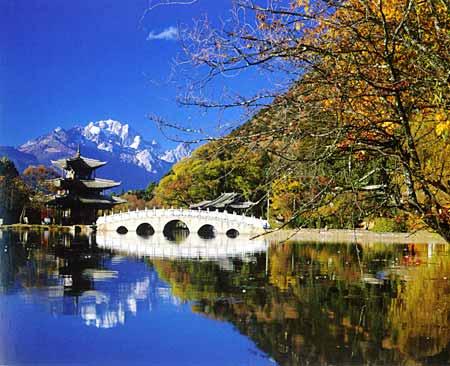 |
|
|
|
|||||||||||
What needs to be mentioned is that the residents of the Old Town usually love planting flowers and bonsais. They not only plant flowers in their courtyards to make their home beautiful, but also plant flowers and trees in front of their gates, on the riversides and around the wells, making the Old Town gain the compliment of “the town fully filled with green trees and colorful flowers.”
 |
|
The Old Town of Lijiang |
It is interesting that unlike China’s traditional cities surrounded by defense walls, the Old Town of Lijiang had no walls historically. It was said there were two reasons behind it. One was that the headmen, rulers of ancient Naxi ethnic group had a surname of Mu (Chinese character of 木), if their name was surrounded by Chinese character of “口,” their surname would become Chinese character of “困 (being besieged),” which was considered a strict taboo, forcing the headmen not to build walls. The second reason was that the mountains surrounding the old town formed natural “walls” and the gateways on the strategic passes leading to the outside played the role of defense. There once was a wall in the old town. After the government officials of Lijiang replaced headmen to rule the old town in 1723 or the first year of Yongzheng emperor of the Qing Dynasty, the officials built a wall there. The scope of the wall was limited only to the areas surrounding the government office and excluded the areas such as headmen’s offices and Sifang Street. The wall collapsed during an earthquake and is now all gone. The place names such as Nanmenpo (slope near the north gate), Nanmenqiao (a bridge near the south gate) are the only marks of the wall.
There are a few residential architectural complexes outside the Old Town of Lijiang. The Baisha Residential Architectural Complex, located 8 kilometers north of the old town, was once Lijiang’s political, economic and cultural center during the Song and Yuan dynasties from 10th to 14th centuries. The architectural complex is distributed on the axis of a south-north area. There is a trapezoidal plaza in the middle of the architectural complex with a stream of spring water following into the plaza from the north and four unique lanes leading to the outside. The formation and development of the Baisha Residential Architectural Complex laid a foundation for the layout of the Old Town of Lijiang.